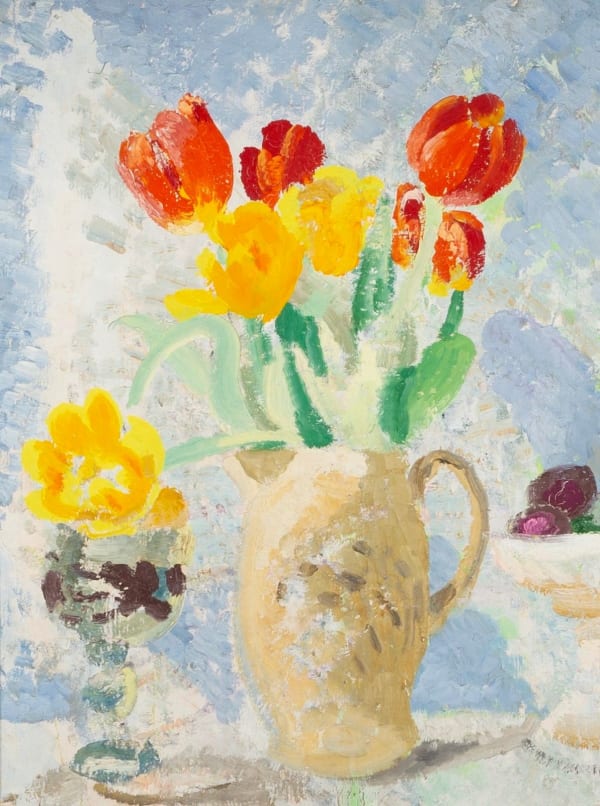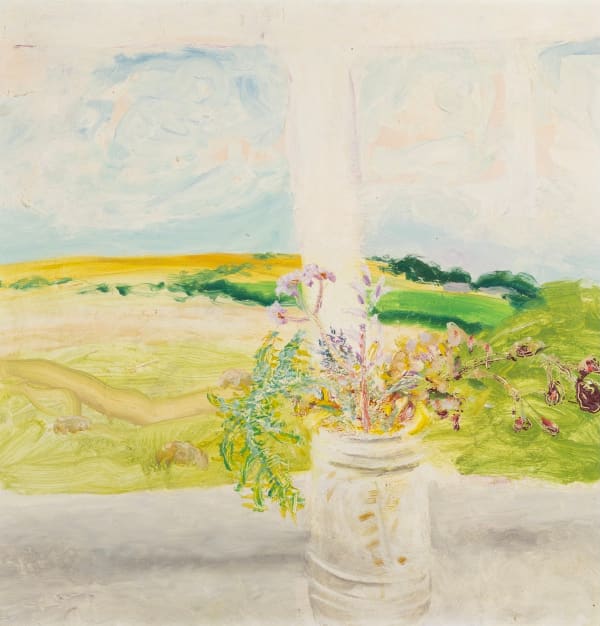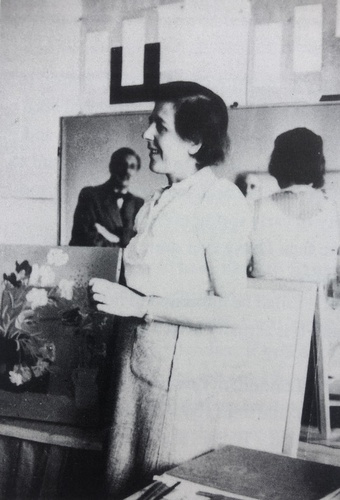Winifred Nicholson Paintings for Sale1893-1981
Winifred Nicholson was a British painter and colourist.
Born Rosa Winifred Nicholson in Oxford, 1893, she first started painting as a child with her grandfather George Howard who was a keen amateur painter and a friend of some of the Pre-Raphaelites including Edward Burne-Jones. In 1912, she began her formal studies at the Byam Shaw School of Art, London and began exhibiting at the Royal Academy two years later. Her studies were interrupted by the outbreak of the First World War and during this time she made plaster casts for artificial limbs as part of the war effort.
Winifred married the English painter Ben Nicholson in November 1920, a relationship that would prove to be mutually influential on their respective artistic practises. The couple worked alongside each other in France, Italy, Devon, and Cornwall (including St Ives) and spent their winters at a villa among vines on the mountainside in the Italian-Swiss Alps, a place they had discovered on their honeymoon. In 1923, Winifred and Ben exhibited together at Paterson Gallery in London.
In 1924, Nicholson acquired Bankshead, a farmhouse in Cumberland which became a source of inspiration for the artist and remained so for many years. She shared her love of the farmhouse and the surrounding countryside with many visiting friends including Christopher Wood, Ivon Hitchens and Paul Nash. Winifred joined the '7 & 5' Society in 1925 and exhibited there for a decade alongside Ben, Hitchens, Wood, Henry Moore, John Piper, Barbara Hepworth and David Jones. Winifred and Ben had three children between 1927 and 1931, Jake, Kate and Andrew.
After separating from Ben Nicholson in 1932, Winifred moved with the three children to Paris. In France, Winifred met many artists including Alberto Giacometti, Jean Arp, Wassily Kandinsky and Piet Mondrian. Conversations she had with Mondrian about colour were referenced in 'Unknown Colour', a collection of her writing and when she moved back to Cumberland in 1938 as war loomed, she was accompanied by Mondrian.
Winifred was a keen traveller throughout her life, starting with extensive travels to what was then Burma, Ceylon and India in 1919 and it was here she discovered the possibilities of colour, noting how 'eastern art uses lilac to create sunlight'. Together with the poet Kathleen Raine, she visited the Hebrides and Western Scotland on several occasions during the early 1950s and, in 1953, she exhibited works from these trips in Edinburgh. She also travelled to the Scillies, Orkney and Catalonia in that decade and made numerous trips to Greece in the 1960s and 70s, often accompanied by her daughter, the artist Kate Nicholson.
As well as landscapes and still lifes, Nicholson was known for her flower paintings writing 'I like painting flowers - I have tried to paint many things in many different ways, but my paint brush always gives a tremor of pleasure when I let it paint a flower'. She often combine a still life of flowers in a receptacle such as a vase with a landscape as a backdrop. In 1975 she published 'Flower Tales', a book of the stories flowers tell which was accompanied by flower paintings. Her method of painting was often quick in execution, owing to her method of composing the image in her mind's eye before starting to paint, a process which was described as painstaking.
In 1969 a retrospective exhibition was held at Abbot Hall Art Gallery in Kendal. Shortly afterwards, 12 of her pictures were shown in a touring exhibition that opened at the Hayward Gallery, London. In 1972, Nicholson held a solo exhibition at Kettle's Yard, Cambridge and several years later was given a retrospective organised by the Scottish Arts Council, which travelled from Glasgow to Edinburgh, Carlisle, Newcastle and Cornwall. A Tate retrospective came in 1987, the year of the Faber and Faber monograph. In 2014, her grandson Jovan curated 'Art and Life', an exhibition of Winifred and Ben's works at Dulwich Picture Gallery, London.
Winifred died at Bankshead on 5th March 1981 at the age of eighty-seven.


